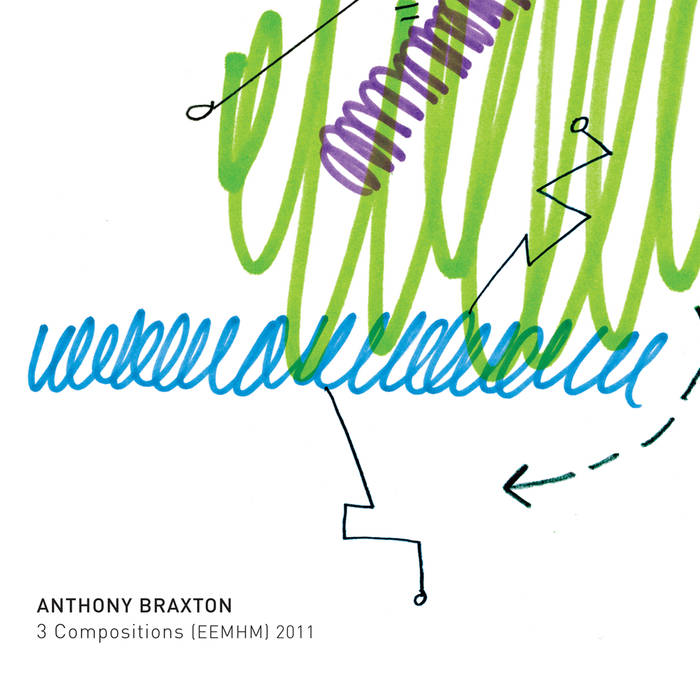Free Jazz in the iPod Era

Anthony Braxton
3 Compositions (EEHMH) 2011
Firehouse 12 3xCD/blu-ray/digital
Anthony Braxton: composer, sopranino, soprano, and alto saxophones, iPod;
Taylor Ho Bynum: cornet, flugelhorn, trumpbone, iPod;
Mary Halvorson: guitar, iPod;
Jessica Pavone: violin, viola, iPod;
Jay Rozen: tuba, iPod;
Aaron Siegel: percussion, vibraphone, iPod;
Carl Testa: bass, bass clarinet, iPod
“As a culture, we are slowly moving away from target linear experiences that are framed as stationary constructs that don’t change on repeated listening, to a new world that constantly serves up fresh opportunities and interactive discourse. American people have made it clear that the new times will call for dynamic inter-action experiences.”
- Anthony Braxton
Compositions 372, 373, and 377 are the next phase in Braxton’s use of recorded sounds as part of the musical fabric of his work. Each of the musicians playing on the recording is not only responsible for their respective instruments; they are each also equipped with an iPod on which they can call up past Braxton recordings to add to the proceedings. While one might expect a fair bit of chaos from this approach, the results are surprisingly focused. Recorded when Braxton was sixty-five, his skills as a player remain undiminished in their vitality and improvisational acumen. Correspondingly, his collaborators possess, to a person, both strong vantage points and enviable chops.
The compositions on display here are filled with swaths of variegated textures. One of the cool things about the addition of the iPods is that different instruments than those possessed by the live cohort get to take solo turns. Thus, we hear voices and piano interject asides amid the vigorous exertions of the players. As a trope on listening in the digital age, with the dangers of information overload and the distractions of an increasingly saturated environment rife with visual and sonic information competing for attention, this current Braxton project is certainly a successful experiment. But the ability of the players to pace their exchanges, exquisitely varying the saturation level of the discourse, also allows listeners a way to recalibrate that is most musically compelling. Recommended.